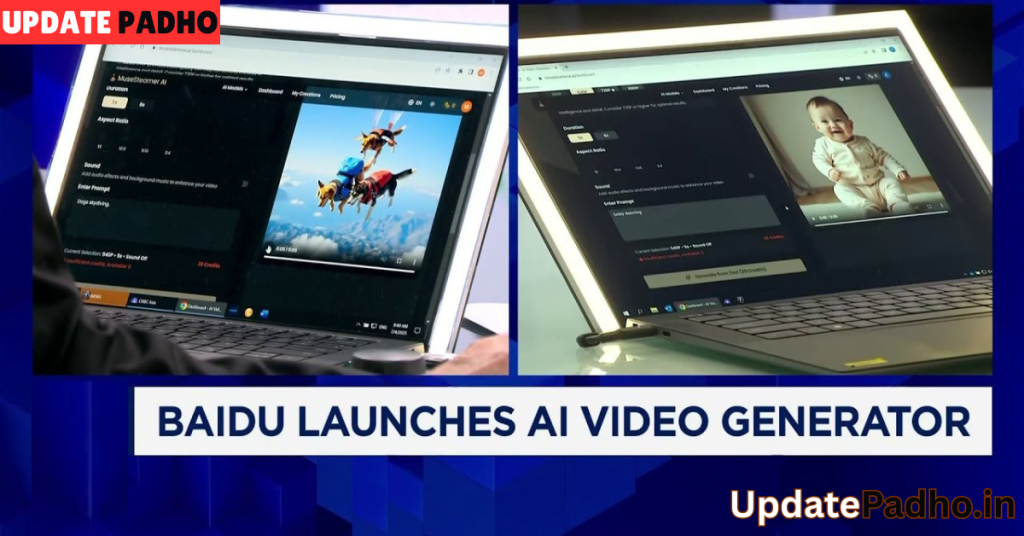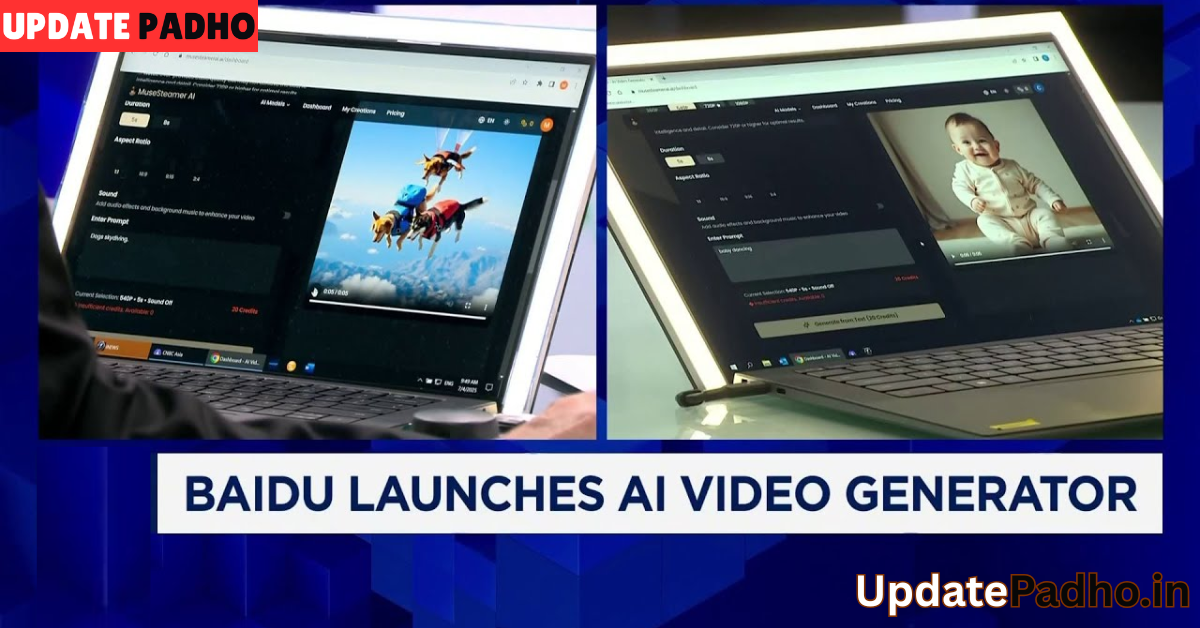In the ever-evolving world of artificial intelligence, video generation has emerged as one of the most exciting frontiers. The ability to create high-quality, realistic videos without the need for traditional filming equipment or physical actors has profound implications across various industries, including entertainment, advertising, education, and beyond. Baidu, one of China’s most prominent tech giants, has recently made waves in this arena with the launch of its AI video model, MuseSteamer. This innovative tool leverages cutting-edge deep learning technologies to generate videos directly from textual descriptions, revolutionizing how video content can be created, edited, and shared.
What is MuseSteamer?
At its core, MuseSteamer is a sophisticated AI-driven video model developed by Baidu to generate realistic video content based on textual input. The model is based on a complex architecture that combines natural language processing (NLP) with computer vision and video synthesis techniques. MuseSteamer can take a written prompt or even a series of instructions and transform them into a full-fledged video sequence, complete with visual elements, movement, and in some cases, even speech. The AI behind this model understands context, can simulate various environments, and is capable of producing video content that aligns with the provided narrative.
How Does MuseSteamer Work?
The magic behind MuseSteamer lies in its multi-modal learning approach. The AI is trained on vast datasets that include video footage, images, and corresponding textual descriptions. This extensive training allows MuseSteamer to generate video segments that reflect the specific details in the input text. Here’s a breakdown of how the process generally works:
- Textual Input Processing: The user provides MuseSteamer with a detailed text prompt, which can range from a brief sentence to a more extensive description. This could include anything from “A cat walking through a sunny park” to “A futuristic city with flying cars at dusk.” The more specific and descriptive the input, the more accurate and creative the resulting video will be.
- AI Understanding and Contextualization: Once the text is input, the model employs advanced NLP techniques to fully understand the nuances of the description. It interprets the scene’s setting, characters, and actions, while also considering things like the tone, mood, and overall aesthetics of the scene.
- Video Synthesis: After processing the text, MuseSteamer begins synthesizing the video. This includes creating characters or objects, setting up virtual environments, and generating the dynamic movements required to bring the scene to life. The AI uses its training data to simulate realistic actions, lighting, and textures to ensure the final product is both visually compelling and accurate to the prompt.
- Refinement and Output: The final step involves refining the video by adding finishing touches like transitions, sound effects, and possibly even voiceovers. Once the video meets the desired criteria, it is rendered and ready for use.

Key Features of MuseSteamer
- Realism and Detail: One of the standout features of MuseSteamer is its ability to produce highly detailed and realistic video content. The AI doesn’t just generate basic clips but instead creates full-fledged scenes with lifelike textures, lighting, and dynamic movements that closely mimic real-world behavior.
- Customizability: MuseSteamer can cater to various industries, from entertainment and film to corporate training and marketing. Users can customize their videos by specifying different settings, characters, and actions in the input, allowing for a wide range of video styles and formats.
- Ease of Use: Unlike traditional video creation, which requires specialized equipment and expertise, MuseSteamer simplifies the process by enabling anyone with a text prompt to generate video content. This democratization of video production makes it accessible to people without any filmmaking experience, empowering creators from all walks of life.
- Speed and Efficiency: MuseSteamer dramatically reduces the time and resources required to produce high-quality video content. Instead of waiting days or weeks for a video to be filmed and edited, users can generate their video in a fraction of the time, opening up new possibilities for rapid content creation.
- Scalability: Since the model is AI-driven, it is capable of producing videos at scale. Whether you need a single video or hundreds, MuseSteamer can handle large volumes of video generation, making it a valuable tool for businesses and content creators who need to produce a high quantity of content quickly.
Applications of MuseSteamer
The potential applications for MuseSteamer are vast and varied. Here are just a few examples of how this innovative AI model can transform different industries:
- Entertainment and Film: Filmmakers and game developers can use MuseSteamer to create storyboards, concept videos, or even full-length animated films. With the ability to generate realistic and dynamic video sequences from text, MuseSteamer could accelerate the pre-production process and enable creators to visualize their ideas faster than ever before.
- Advertising: Marketers and advertisers can leverage MuseSteamer to create compelling video ads based on text-based campaign briefs. This could significantly reduce the costs associated with traditional video production, while also enabling quicker turnaround times for ad campaigns.
- Education and Training: Educational institutions and corporate trainers can use MuseSteamer to create instructional videos, simulations, or interactive learning experiences. For example, a medical training program could use AI-generated videos to simulate surgical procedures or patient scenarios in a more engaging, cost-effective manner.
- Social Media and Content Creation: Content creators on platforms like YouTube, TikTok, and Instagram could use MuseSteamer to quickly generate engaging video content based on trending topics or audience preferences. The tool could empower creators to produce higher volumes of content without the need for expensive production equipment or teams.
- Virtual Reality (VR) and Augmented Reality (AR): MuseSteamer’s ability to generate detailed, immersive environments could also be leveraged in VR and AR applications. This opens up new possibilities for virtual worlds, immersive gaming experiences, and even virtual tours.
Challenges and Ethical Considerations
While the potential of MuseSteamer is immense, it also comes with its own set of challenges and ethical considerations. One of the main concerns is the possibility of misuse. Since the AI can generate highly realistic videos from text prompts, there is a risk of deepfake creation, where misleading or harmful content could be produced and distributed.
Moreover, like all AI models, MuseSteamer’s outputs depend heavily on the quality of the data it’s trained on. Biases in the training data could result in biased or inaccurate video content, which could perpetuate stereotypes or misrepresentations.
To address these concerns, Baidu must implement robust safeguards, including better content moderation tools and ethical guidelines for users of the platform.
Conclusion
Baidu’s MuseSteamer is a groundbreaking innovation that is set to revolutionize the video production landscape. By combining advanced AI, deep learning, and video synthesis techniques, MuseSteamer enables users to create high-quality videos directly from text prompts, making video creation faster, more accessible, and cost-effective. With applications spanning entertainment, education, marketing, and more, MuseSteamer opens up exciting new possibilities for both professional and amateur content creators alike. However, as with all powerful technologies, it will be crucial to ensure that its use is guided by ethical considerations and safeguards against potential misuse.



